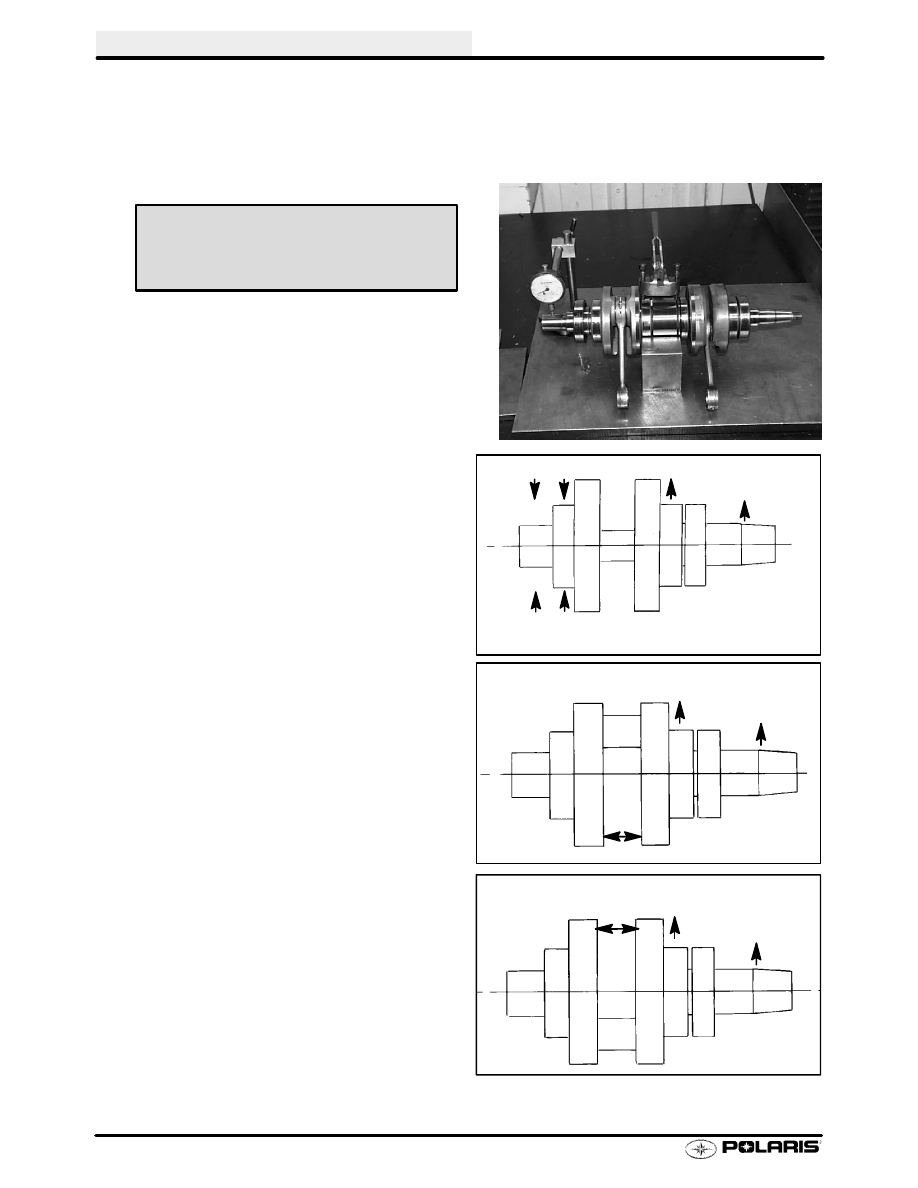Snowmobile Polaris High Performance (2001 year). Manual - part 27

ENGINE
2.54
Crankshaft Straightening
Lubricate the bearings and clamp the crankshaft securely in the holding fixture. On three cylinder crankshafts,
straighten one of the ends (Magneto or PTO) and then straighten the center section. Place the center section
in the holding fixture and then straighten the remaining end. If truing the crankshaft requires striking with a
hammer, always be sure to re-check previously straightened areas to verify truing. Refer to the illustrations below.
NOTE: The rod pin position in relation to the dial indi-
cator position tells you what action is required to
straighten the shaft.
5.
To correct a situation like the one shown in the
illustration at right, strike the shaft at point A with a
brass hammer.
NOTE: The rod pin position in relation to the dial indi-
cator position tells you what action is required to
straighten the shaft.
6.
To correct a situation like the one shown in the
illustration at right, squeeze the crankshaft at
point A. (Use tool from alignment kit).
7.
If the crank rod pin location is 180
_
from the dial
indicator (opposite that shown above), it will be
necessary to spread the crankshaft at the A
position as shown in the illustration at right. When
rebuilding
and
straightening
a
crankshaft,
straightness is of utmost importance.
Runout
must be as close to zero as possible.
NOTE: Maximum allowable runout is .004
I
(.1 mm).
Crankshaft Alignment Fixture
PN 2870569
A
B
HIGH .004 (.1mm)
HIGH .004 (.1mm)
SUPPORT CRANKSHAFT
AT THESE TWO BEARINGS
A
A
HIGH .002 (.05mm)
HIGH .005 (.13mm)
A
HIGH .002 (.05mm)
HIGH .005 (.13mm)
A